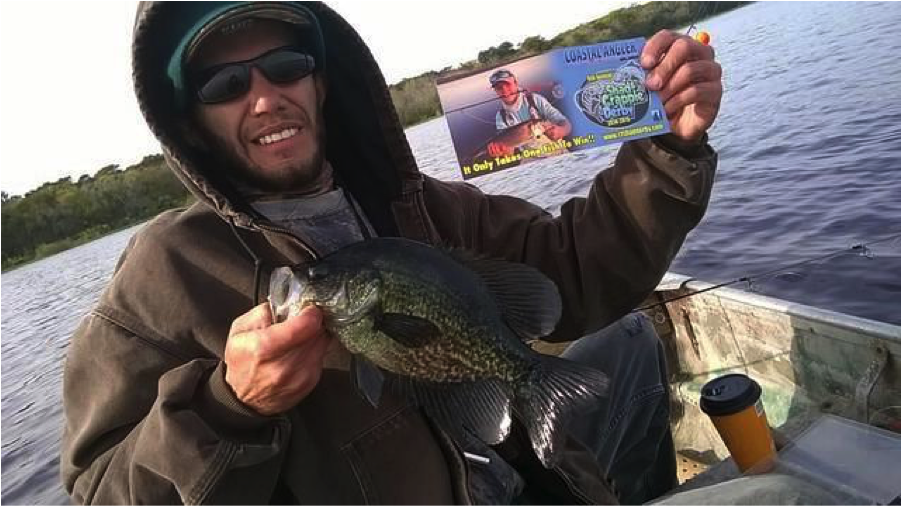Boats are lining up at the ramps to get in on the fun. It’s that time of year when all ages can enjoy catching a lot of fish together, right here in Central Florida. Each year black crappie school up to mingle with each other anticipating their annual spawning rituals. Males move into shallow water first, fanning beds with their tails while females stage along the deeper edges not far away. Egg laden females move to the beds around the full and new moons and only stay there for a few hours. Males return to protect the eggs for a few days and once hatched, the fry are on their own.
Everyone has a favorite way to target these tasty gumdrops of the fresh water. Minnows under a cork, jigging structure, longline trolling, vertical trolling, or spider- rigging are the most common techniques used. Gear can be as simple as a cane pole. Some folks use their flats fishing combos and top shot 50-100 feet of eight-pound monofilament line, and then tie a jig to the end for longline trolling the lake. No matter which way you like, the fish are here right now and will continue to be the targets for crappie-fevered anglers into March of next year.
A minnow fished under a cork is simple and easy. Minnows are readily available. Start with 8 to 12 pound test monofilament line and slide a cork up the line. Tie a number two long shank wire hook to the end of the line; add a split shot weight 12 inches up, then pin the cork according to water depth. Hook the minnow from the bottom of the lip out the top of the head. Adjust the cork so the minnow swims in the strike zone – maybe six foot deep, maybe two foot shallow, depending on where the fish bite.
With a boat, trolling motor, GPS, and fish finder, anglers can vary technique – optional gear but worth it. Longline trolling means the bait trolls behind the boat. Start with six to eight pound mono line, and then tie a small crappie jig (1/16th or 1/8th ounce) to the end of the line. Bright colors work great – chartreuse, orange, pink and blue/white are popular in Central Florida. Troll over fishy areas at around 1.2 to 1.8 miles per hour. Heavier jigs and slower speeds get the bait down deeper in the water column while lighter jigs, lighter line, and faster speeds bring the bait up near the surface.
Depth where the fish strike is found by changing speeds. Tip the jig with a minnow to add smell. Tie on a second jig eighteen inches up the main line and tip them both with minnows. Like any fishing, techniques can get crazy. Fish simple and change one thing at a time until you find the fish.
Spider rigging, also known as vertical trolling, is similar to long line trolling except for adding a weight between the two jigs and trolling out the front of the boat at slower speeds. Using multiple long rods in two sets of 4-way rod holders out the bow, anglers increase their chances by offering 16 baits spread out up to forty feet wide. Typical speeds for spider rigging are .4 to 1.1 miles per hour. When the fish are finicky, a slower presentation is sometimes the way to produce strikes.
Anyway you like it – minnows under a cork, long lining, or vertical trolling – the crappies are biting! Grab your friends and poles and go fishing. Don’t forget to sign up for the free 2014-2015 Shad and Crappie Derby before you go! It only takes one fish to win, over $5,000 in prizes. Enjoy crappie season, have fun and don’t forget to send in your photos! http://www.cfshadderby.com/

